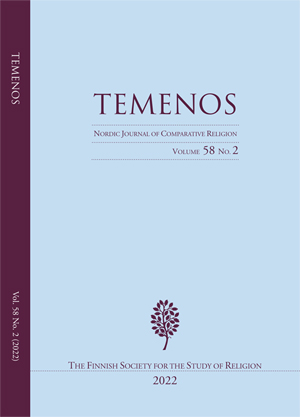A Hundred Years of Religious Freedom in Finland
DOI:
https://doi.org/10.33356/temenos.115502Keywords:
Freedom of religion, History, State church, Basic right, Religious EducationAbstract
This article examines how religious freedom has been implemented and interpreted in Finland over the last hundred years. Moving chronologically, I explore the most crucial developmental phases in religious freedom legislation and public discussion. The Act on the Freedom of Religion was only introduced after Finland’s independence in 1917 and entered into force at the beginning of 1923. The article shows themes that provoked much discussion in the 1920s and were interestingly repeated in the debate in the 1960s. The question of the relationship between the church and state was at the core of the Finnish public debate on freedom of religion from the outset. A similar discussion again became visible at the turn of the twenty-first century in connection with the basic rights reform and processing of the new Act on the Freedom of Religion. The strength of the Finnish state church system in society is still illustrated by the fact that the Act on the Freedom of Religion of 2003 did not really change the basic premise regarding the Lutheran and Orthodox churches, which hold a special position. Opinion remains divided on whether such a system is problematic for the realization of religious freedom.

Downloads
Published
Issue
Section
License
Copyright (c) 2022 Ilkka Huhta

This work is licensed under a Creative Commons Attribution 4.0 International License.
Author's Guarantee
- The Author acknowledges that the Work will be publicly accessible on the Internet and that such access will be free of charge for the readers.
- The Author guarantees that the Work is her/his original work that has not been published before and cannot be construed as copying or plagiarism. Furthermore, the Author confirms that the Work contains no statement that is unlawful, defamatory or abusive or in any way infringes the rights of others.
- The Author confirms that she/he has secured all written permissions needed for the reproduction in the Publication of any material created by a third party.
User Rights
Under the CC BY 4.0 license, the Author/s and users are free to:
- Share — copy and redistribute the material in any medium or format,
- Adapt — remix, transform, and build upon the material for any purpose, even commercially,
- However, the Work must be attributed to the original Author and source of publication.
The license of the published metadata is Creative Commons CCO 1.0 Universal (CC0 1.0)
Author Rights
The Authors maintain the right to:
- copyright, and other proprietary rights relating to the Work,
- the right to use the substance of the Work in future own works,
- the right to self-archiving/parallel publishing (publisher's PDF allowed).
Rights of Publisher
- The Publisher reserves the right to make such editorial changes as may be necessary to make the Work suitable for publication in the publication, e.g. style of punctuation, spelling, headings and the like.
- The Publisher will publish the Work if the editorial process is successfully completed and reserves the right not to proceed with publication for whatever reason.
- The publication entitles the author to no royalties or other fees. This agreement will be governed by the laws of Finland.






